Osaka is widely regarded to have some of the best food in Japan. Quick, tasty bites are in Osaka’s DNA. And best of all, they are all super cheap!
History of the yatai
Yatai street food carts or “shop stands”, as they are translated, date back to at least the 17th century, with some sources saying they were around in the 5th and 6th centuries! Yatai became extremely popular during the Meiji period (1868 – 1912) and were generally two wheeled wooden pushcarts selling street food. Yatai historically sold and currently sell everything from ramen to okonomiyaki to oden to yakitori to gyoza and tempura.
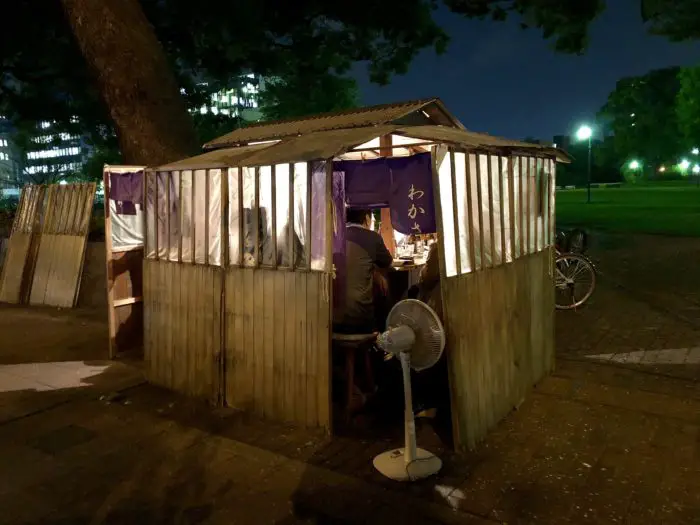
Unfortunately traditional yatai are hard to find these days, as most were shut down during the Tokyo Olympics in the 60s due to health concerns. Today they are subject to strict licenses and are dwindling every year, with most being found only in Fukuoka. However, street food culture lives on throughout the country, and this post is going to talk about all the yummy foods you can find in Osaka.
Okonomiyaki
This is the classic, archetypal snack of Osaka. A delicious, savory pancake made from batter (like a pancake) and a shredded cabbage binder. It sounds bizarre, but it’s absolutely wonderful. Throw in everything you want in an omelette, top with kewpie mayo and soy sauce, and you are golden.
The name is derived from okonomi, which roughly translates to “how you like” or “what you like”, and yaki, meaning fried.
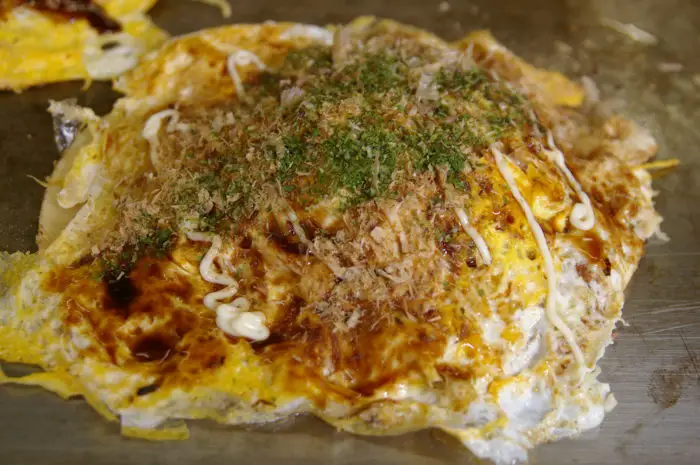
Common ingredients include grated nagaimo (a type of yam), water or dashi, eggs and shredded cabbage, and sometimes green onion, meat (generally thin pork belly, often mistaken for bacon), octopus, squid, shrimp, vegetables, konjac (Japanese tubers), mochi or cheese. Topping might include bonito flakes, kewpie mayo, pickled ginger, a Worcestershirelike sauce called otafuku, and nori seaweed flakes. This is definitely the quintessential Osaka street food.
Takoyaki
Takoyaki is another savory street snack made from fried wheat flour dough balls full of diced octopus meat, tempura scraps, pickled ginger, and green onions. They are sold in “boats” of 4-10 dumplings and prepared in square molds in yatai carts.
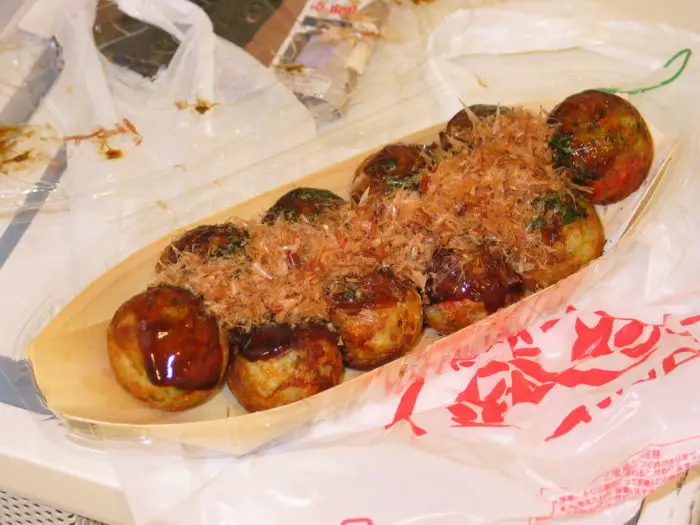
Takoyaki was invented in Osaka by a street vendor named Tomekichi Endo in 1935, and was inspired by akashiyaki, a similar dumpling made from egg-rich batter from Asahi in the Hyogo Prefecture.
Dango 🍡
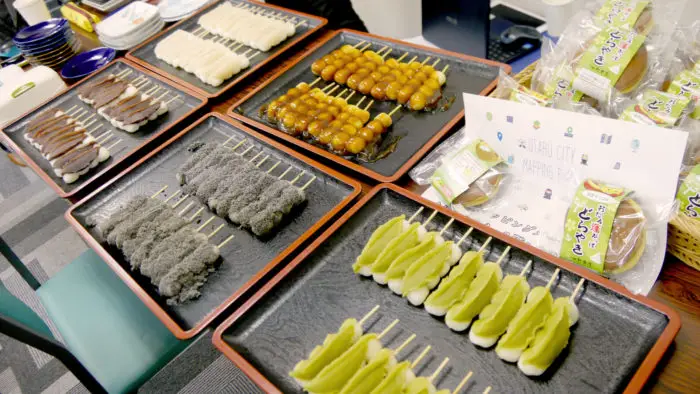
Dango is a Japanese sweet dumpling with a similar texture to mochi and deftly illustrated by this emoji 🍡
Sometimes they come in cute pastel colors, and other times you can find them as plain dumplings covered in a sweet soy sauce. Dango are made from mochiko, which is rice flour rather than rice like mochi.
Taiyaki
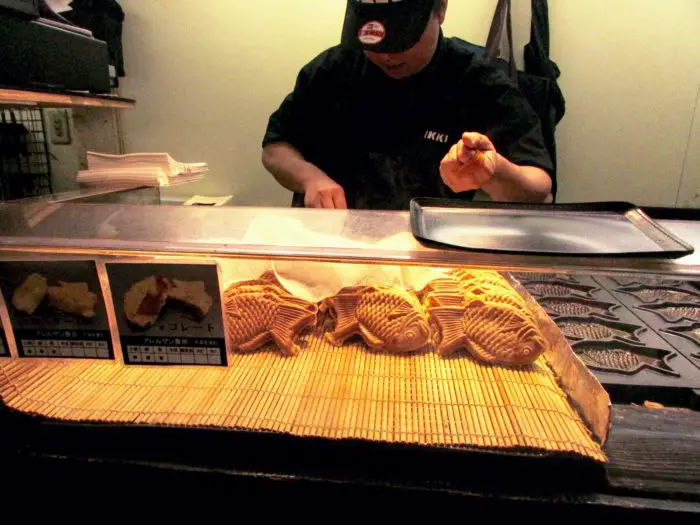
Not to be confused with the earlier dumpling I mentioned, takoyaki, taiyaki are cute fish-shaped cakes that can be filled with sweet paste. They come in red bean, custard, chocolate, cheese, sweet potato, and various other flavors.
Kushikatsu
Kushi means skewer and katsu means deep fried cutlet, so unsurprisingly, kushikatsu means deep fried skewers. The batter is usually prepared with a mix of flour, egg, and panko.
Kushikatsu can be made with chicken, pork, seafood, or seasonal vegetables such as eggplant, onion, bamboo shoots, mushrooms, shishito pepper, lotus root, Chinese yam, burdock, pumpkin, okra, potatoes, tomatoes, and a bevy of other options.
Kushikatsu is also typically served with dipping sauces such as tonkatsu sauce or the house speciality sauce. If you eat kushikatsu in a restaurant setting, there may be a communal dipping pot. Don’t double dip, instead scoop sauce onto your skewers using spoons, lettuce, or other implements after your first bite.
Oden
Typically considered a winter food, oden is served year round from food carts as well. Oden is a traditional boiled stew dating back from the Edo period, making it one of Japan’s oldest fast foods.
Oden can be served in sit down style restaurants or from small street carts on skewers for as low as 100 yen.
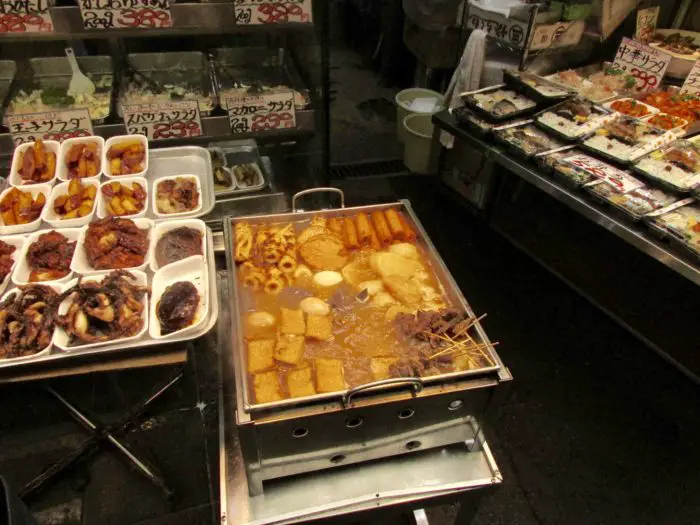
Oden is prepared from a “master broth” that has ingredients added over time to replenish and deepen the flavor. Many of these master broths are years old and considered trade secrets.
Oden ingredients also include daikon roots, eggs, fish cakes, fish paste wrapped vegetables and sausage, wheat blocks called chikuwabu, konjac cakes, konjac noodles, atsuage (tofu cake)
Fresh juices
After chowing down on so much Osaka street food, you definitely need a drink. Japanese fresh squeezed juice is very common to find in various street markets and stalls. Japanese call this fresh squeezed style of juice “straight” juice.
Mikan, or satsuma, is a popular fruit in Japan you can find juiced in many places. It’s a kind of seedless citrus fruit similar to an orange.
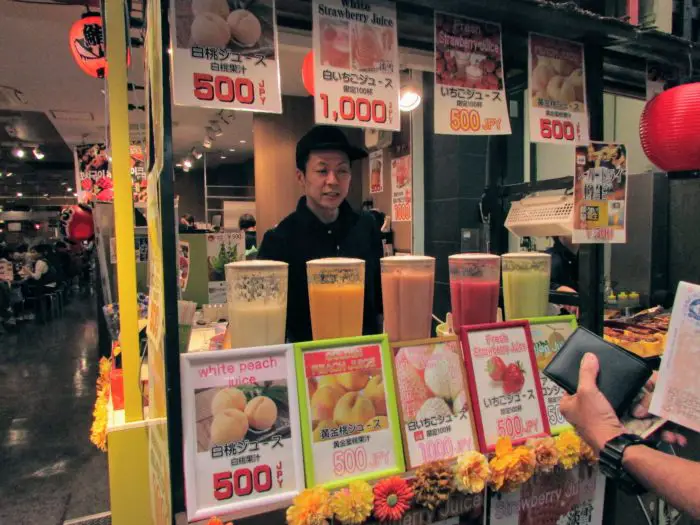
Yuzu is another Japanese speciality, which has a citrus taste something between a lemon and lime.
Another kind of juice that is difficult to find in other countries is white strawberry juice. These strawberries lack pigmentation, and Japanese vendors collect them to make strawberry juice with a slightly sweeter taste for a much higher price.
Tako Tamago
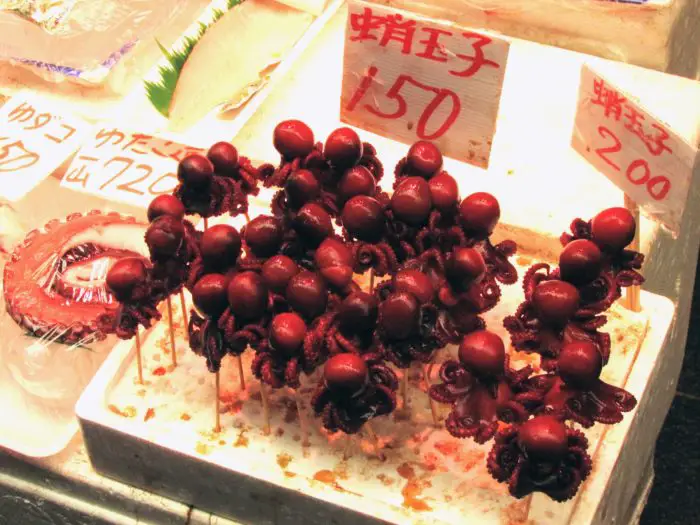
Tako tamago, or octopus egg, is an adorable (or disgusting if you are vegan) street food consisting of a quail egg on a skewer with a mini grilled octopus wrapper. Definitely a uniquely Japanese street food.
Yakiniku
This isn’t technically a street food, but is worth a mention as an Osakan speciality. Yakiniku means grilled meat. It originally referred to western style barbecue, but these days it refers to cubes of grilled meat. These meat cubes are often offal or fat and vegetables prepared over wood charcoal flames.
Many yakiniku restaurants opened in Osaka and Tokyo after WWII. Meat is usually brought to a table raw and cooked by customers and dipped in various sauces.
Yakiniku is also popular in Korea, and both countries have differing claims on where and how it originated.
Places to eat street food:
Kuromon Ichiba Market
This market stretches for 580 meters in Osaka’s Chuo ward and is nicknamed “Osaka’s kitchen”. Both homeowners and restauranteurs purchase their supplies here and this market is famous for its fresh seafood. Now it has become a bit of a tourist attraction, hosting more than 23,000 visitors a day. This is a great place to sample Osaka street food!
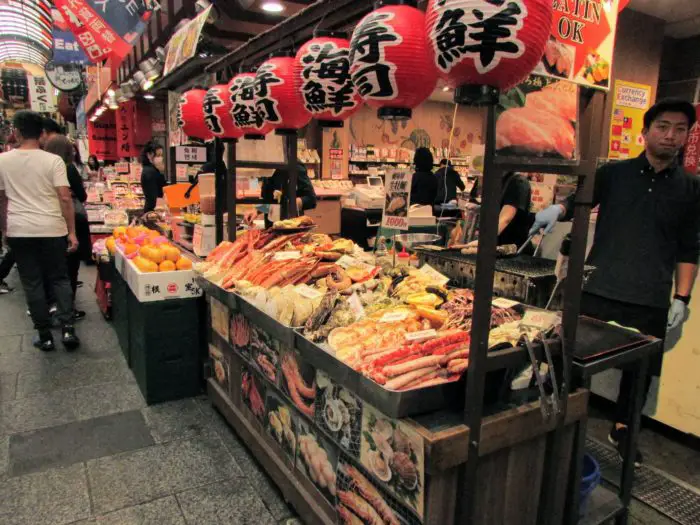
Ikuno K-Town
This is a Korea-town located in Osaka. It’s full of Korean street eats such as scallion pancakes, kimchi, and glutinous rice cakes.
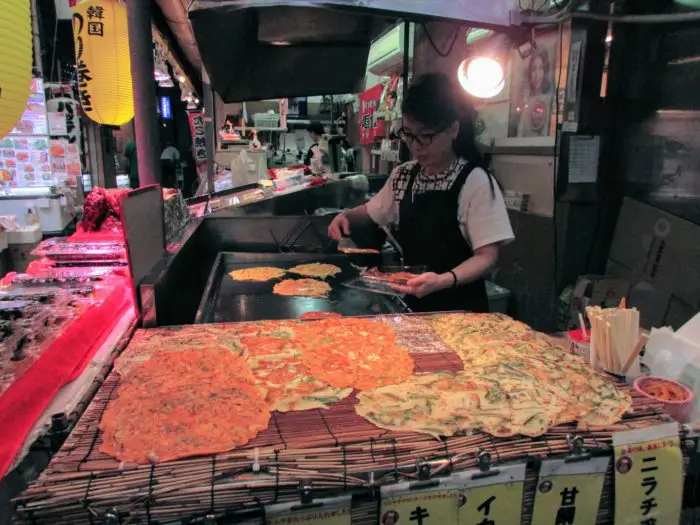


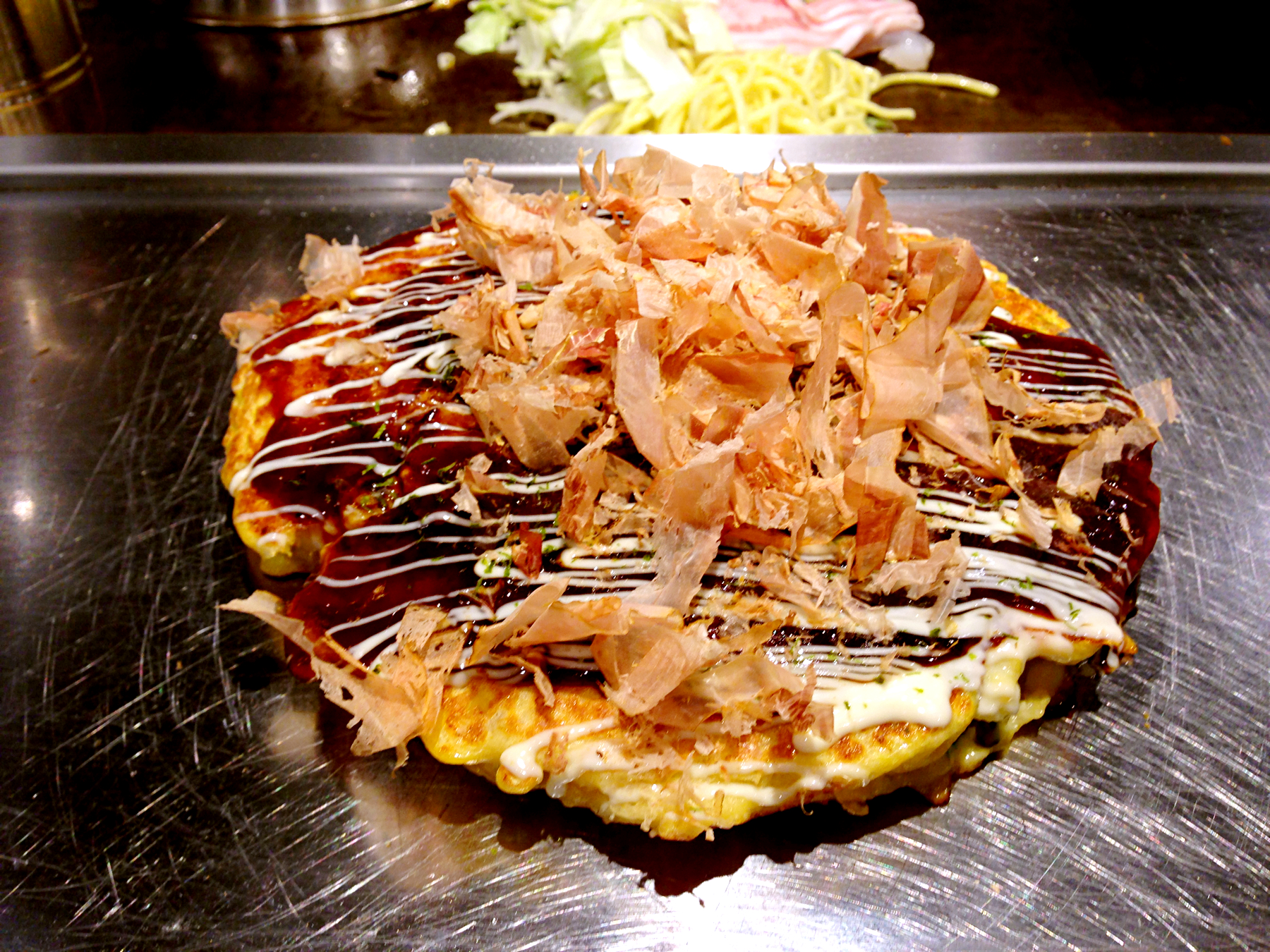
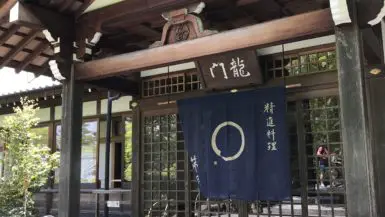

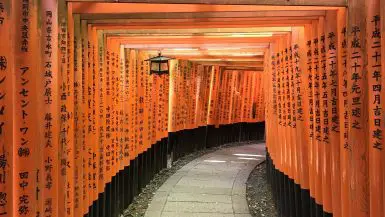
Today, the Dotonbori area is the place to head to for your fill of “konomono”, which means “food made from flour”. That includes the popular local dishes of okonomiyaki pancakes, takoyaki octopus balls and ikayaki grilled squid crackers.
These dishes are the soul food of Osaka, suiting the locals’ preference for food that is fast, filling, affordable and needless to say, tasty.